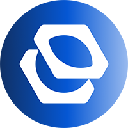-
 Bitcoin
Bitcoin $107,341.7259
0.15% -
 Ethereum
Ethereum $2,438.6204
0.70% -
 Tether USDt
Tether USDt $1.0003
-0.02% -
 XRP
XRP $2.1866
1.94% -
 BNB
BNB $649.0952
0.36% -
 Solana
Solana $150.9602
5.63% -
 USDC
USDC $0.9999
0.00% -
 TRON
TRON $0.2742
0.40% -
 Dogecoin
Dogecoin $0.1645
1.93% -
 Cardano
Cardano $0.5669
1.18% -
 Hyperliquid
Hyperliquid $37.8286
4.19% -
 Bitcoin Cash
Bitcoin Cash $491.4669
-2.74% -
 Sui
Sui $2.8150
3.06% -
 Chainlink
Chainlink $13.4184
2.91% -
 UNUS SED LEO
UNUS SED LEO $9.0809
0.27% -
 Avalanche
Avalanche $18.0295
2.60% -
 Stellar
Stellar $0.2396
1.19% -
 Toncoin
Toncoin $2.8587
0.13% -
 Shiba Inu
Shiba Inu $0.0...01160
2.59% -
 Litecoin
Litecoin $86.4192
1.45% -
 Hedera
Hedera $0.1486
1.19% -
 Monero
Monero $308.4324
0.87% -
 Polkadot
Polkadot $3.4202
1.43% -
 Bitget Token
Bitget Token $4.6436
-0.34% -
 Dai
Dai $0.9998
-0.02% -
 Ethena USDe
Ethena USDe $1.0002
0.00% -
 Uniswap
Uniswap $7.1527
3.29% -
 Pi
Pi $0.5357
-8.45% -
 Pepe
Pepe $0.0...09588
4.61% -
 Aave
Aave $259.9759
0.81%
Exchange Jargon: Professional Vocabulary from Limit Orders to Leverage
Mastering crypto trading terms like limit orders, market orders, stop orders, leverage, margin trading, and liquidity is essential for informed and effective market navigation.
May 10, 2025 at 08:42 pm
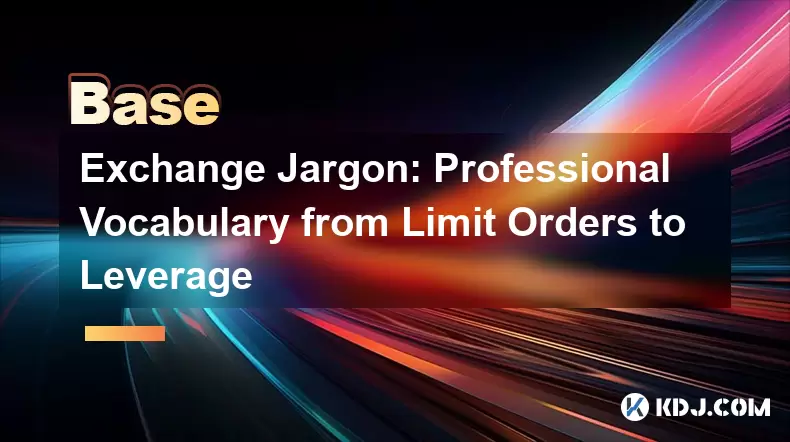
In the dynamic world of cryptocurrency trading, understanding the professional vocabulary used by exchanges is crucial for any trader aiming to navigate the markets effectively. From limit orders to leverage, the jargon can be overwhelming for beginners but mastering these terms is essential for making informed trading decisions. This article delves into some of the key terminologies used in cryptocurrency exchanges, providing clarity and insight into their meanings and applications.
Limit Orders
A limit order is a type of order to buy or sell a cryptocurrency at a specified price or better. Unlike a market order, which executes at the current market price, a limit order allows traders to set their desired price, offering more control over the trade execution.
Setting a Limit Order: To set a limit order, traders must specify the cryptocurrency they want to trade, the amount, and the limit price. For example, if you want to buy Bitcoin at $30,000, you would set a buy limit order at that price. The order will only execute if the market price reaches or falls below $30,000.
Types of Limit Orders: There are two main types of limit orders – buy limit orders and sell limit orders. A buy limit order is placed below the current market price, while a sell limit order is placed above the current market price.
Advantages and Risks: The primary advantage of using limit orders is the ability to control the price at which you buy or sell. However, the risk is that the market may never reach your specified price, and the order may not be executed.
Market Orders
A market order is an order to buy or sell a cryptocurrency at the current market price. This type of order is executed immediately, making it suitable for traders who prioritize speed over price.
Executing a Market Order: To execute a market order, traders simply need to select the cryptocurrency and the amount they wish to trade. The order will be filled at the best available price in the market at that moment.
Pros and Cons: Market orders are advantageous for their immediacy, ensuring that trades are executed quickly. However, the trade-off is that the execution price may differ from the price seen when the order was placed, especially in volatile markets.
Stop Orders
A stop order, also known as a stop-loss order, is designed to limit a trader's loss on a position. It becomes active and turns into a market order once the market price reaches a specified level, known as the stop price.
Setting a Stop Order: To set a stop order, traders must specify the stop price and the amount of cryptocurrency they wish to trade. For example, if you own Bitcoin and want to limit your loss, you might set a stop order at $28,000. If the price of Bitcoin falls to $28,000, the stop order will trigger and sell your Bitcoin at the current market price.
Types of Stop Orders: There are two main types of stop orders – stop-loss orders and stop-limit orders. A stop-loss order turns into a market order once the stop price is reached, while a stop-limit order turns into a limit order at the stop price.
Benefits and Drawbacks: Stop orders are useful for managing risk and protecting gains. However, the disadvantage is that the execution price may be significantly different from the stop price, especially in fast-moving markets.
Leverage
Leverage is a trading mechanism that allows traders to control a larger position with a smaller amount of capital. It is expressed as a ratio, such as 10:1, meaning that for every dollar of capital, traders can control a position worth ten dollars.
Using Leverage: To use leverage, traders must first understand the margin requirements set by the exchange. They then need to deposit the required margin into their trading account. For example, if an exchange offers 10:1 leverage and you want to trade $10,000 worth of Bitcoin, you would need to deposit $1,000 as margin.
Pros and Cons: Leverage can amplify both profits and losses. While it allows traders to potentially increase their returns, it also increases the risk of significant losses. It is crucial for traders to manage their risk carefully when using leverage.
Margin Trading
Margin trading involves borrowing funds from an exchange to trade larger positions than what would be possible with the trader's own capital. It is closely related to leverage, as traders use borrowed funds to increase their trading power.
Engaging in Margin Trading: To engage in margin trading, traders must first open a margin account with the exchange. They then need to deposit the required initial margin and maintain the maintenance margin throughout the trade. For example, if you want to buy $5,000 worth of Ethereum on margin, and the initial margin requirement is 50%, you would need to deposit $2,500.
Margin Calls: If the value of the trader's position falls below the maintenance margin, the exchange may issue a margin call, requiring the trader to deposit additional funds or close the position to cover the shortfall.
Risks and Rewards: Margin trading can lead to higher potential returns, but it also increases the risk of substantial losses. Traders must be aware of the risks and have a solid risk management strategy in place.
Liquidity
Liquidity refers to the ease with which a cryptocurrency can be bought or sold in the market without significantly affecting its price. High liquidity means that there are many buyers and sellers, resulting in tighter bid-ask spreads and smoother trading.
Assessing Liquidity: Traders can assess the liquidity of a cryptocurrency by looking at the order book depth, trading volume, and bid-ask spread. A deep order book with high trading volume and a narrow bid-ask spread indicates high liquidity.
Impact on Trading: High liquidity is beneficial for traders as it allows for easier entry and exit from positions. Conversely, low liquidity can lead to slippage and difficulty in executing trades at desired prices.
Frequently Asked Questions
Q: What is the difference between a stop-loss order and a stop-limit order?
A: A stop-loss order turns into a market order once the stop price is reached, executing the trade at the current market price. In contrast, a stop-limit order turns into a limit order at the stop price, executing the trade at the specified limit price or better. The key difference is that a stop-limit order provides more control over the execution price but may not be filled if the market does not reach the limit price.
Q: How can traders manage the risks associated with leverage and margin trading?
A: Traders can manage the risks of leverage and margin trading by setting stop-loss orders, using conservative leverage ratios, diversifying their portfolios, and maintaining adequate margin levels. It is also important to have a clear risk management strategy and to only trade with capital that they can afford to lose.
Q: Why is liquidity important in cryptocurrency trading?
A: Liquidity is important in cryptocurrency trading because it affects the ease of buying and selling assets. High liquidity means that traders can enter and exit positions quickly and at predictable prices, reducing the risk of slippage. Low liquidity can make it difficult to execute trades, leading to higher costs and potential losses.
Q: Can limit orders be used for both buying and selling cryptocurrencies?
A: Yes, limit orders can be used for both buying and selling cryptocurrencies. A buy limit order is set below the current market price, while a sell limit order is set above the current market price. Both types of limit orders allow traders to specify the price at which they want to execute their trades, providing control over the trade execution.
Disclaimer:info@kdj.com
The information provided is not trading advice. kdj.com does not assume any responsibility for any investments made based on the information provided in this article. Cryptocurrencies are highly volatile and it is highly recommended that you invest with caution after thorough research!
If you believe that the content used on this website infringes your copyright, please contact us immediately (info@kdj.com) and we will delete it promptly.
- AI Token Taking Over: Why Smart Investors are Eyeing Audited Crypto Ruvi AI
- 2025-06-29 04:30:12
- Ethereum, AI Tokens, and Growth: Is Ruvi AI the Next Big Thing?
- 2025-06-29 04:30:12
- Hedera Price: Decoding Technical Signals and Upside Potential
- 2025-06-29 04:50:13
- Altcoin Rally on the Horizon? Decoding the Potential Boom
- 2025-06-29 04:35:12
- On-Chain Data Deep Dive: Altcoin Growth & Transaction Volume Insights
- 2025-06-29 05:30:13
- Cryptos, Real Growth, 2025: Navigating the Landscape
- 2025-06-29 05:30:13
Related knowledge
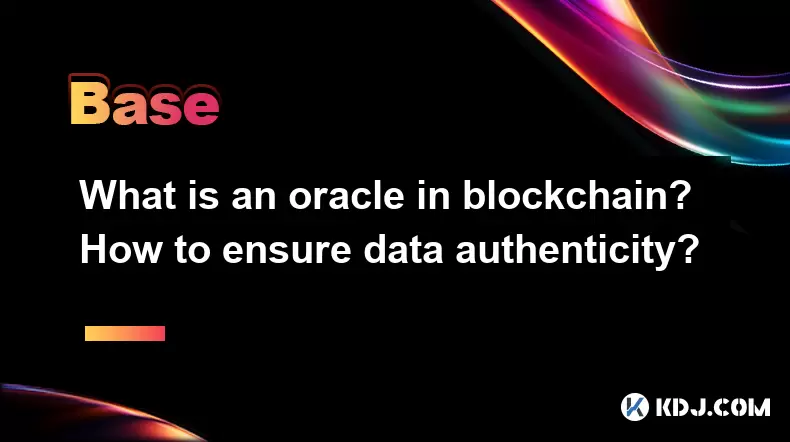
What is an oracle in blockchain? How to ensure data authenticity?
Jun 19,2025 at 08:49pm
Understanding the Role of an Oracle in BlockchainIn the context of blockchain technology, an oracle serves as a bridge between the blockchain and external data sources. While blockchains are inherently secure and decentralized, they cannot access real-world information on their own. Oracles enable smart contracts to interact with off-chain data such as ...
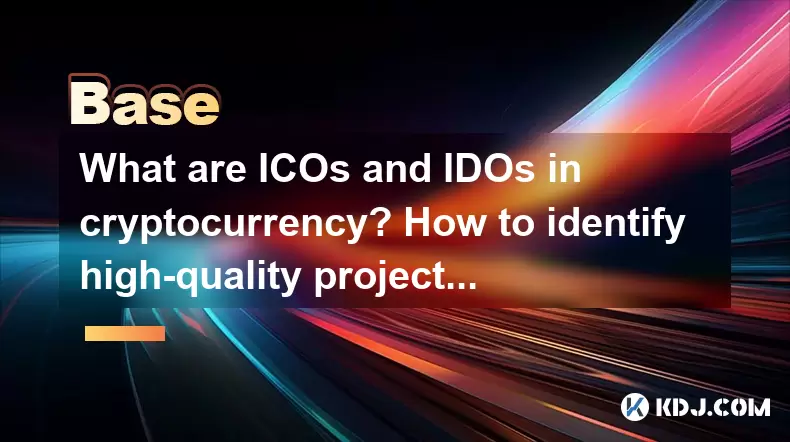
What are ICOs and IDOs in cryptocurrency? How to identify high-quality projects?
Jun 22,2025 at 11:49am
Understanding ICOs in CryptocurrencyInitial Coin Offerings (ICOs) are fundraising mechanisms used by cryptocurrency startups to raise capital for their projects. In an ICO, a company creates and sells its own tokens to investors in exchange for established cryptocurrencies like Bitcoin or Ethereum. The process typically involves the release of a whitepa...
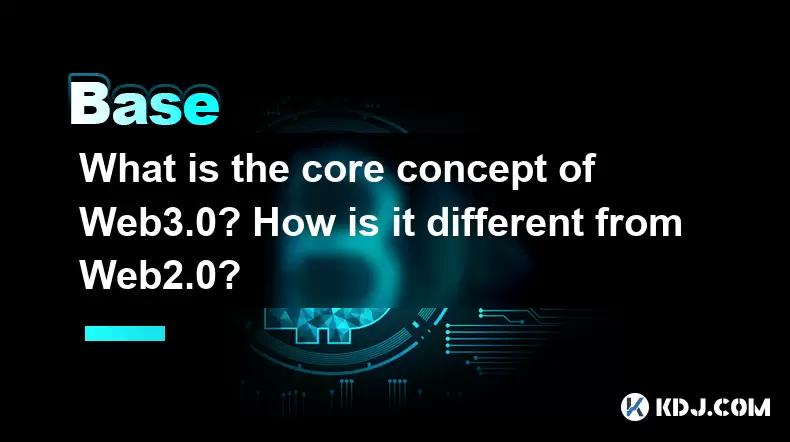
What is the core concept of Web3.0? How is it different from Web2.0?
Jun 21,2025 at 05:56pm
Decentralization as the Foundation of Web3.0The core concept of Web3.0 revolves around decentralization, which fundamentally challenges the centralized architecture of Web2.0. In Web3.0, control and ownership are distributed across a network rather than being held by a central authority or corporation. This is achieved primarily through blockchain techn...
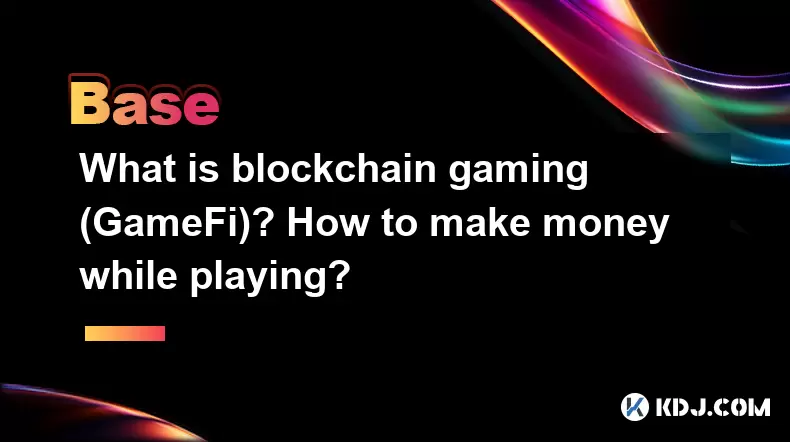
What is blockchain gaming (GameFi)? How to make money while playing?
Jun 20,2025 at 07:56am
Understanding Blockchain Gaming (GameFi)Blockchain gaming, often referred to as GameFi, is a fusion of blockchain technology and video games. It enables players to own in-game assets through non-fungible tokens (NFTs) and earn rewards via cryptocurrencies or token-based systems. Unlike traditional games where items are controlled by centralized develope...
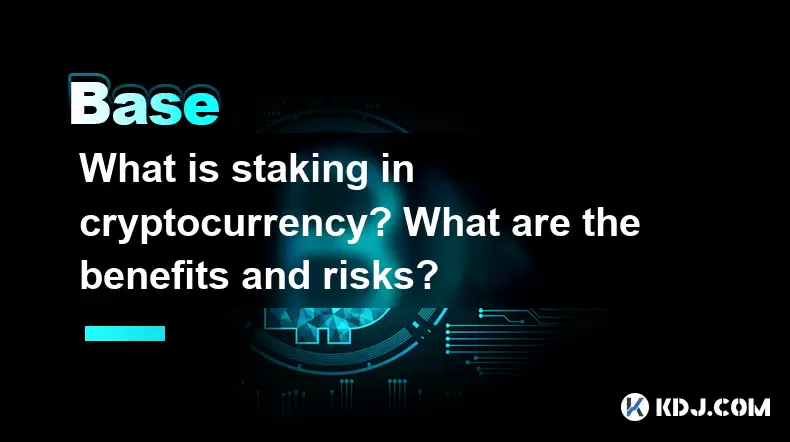
What is staking in cryptocurrency? What are the benefits and risks?
Jun 22,2025 at 10:01am
Understanding the Concept of Staking in CryptocurrencyStaking in cryptocurrency refers to the process of actively participating in transaction validation on a blockchain network that uses a Proof-of-Stake (PoS) consensus mechanism. Instead of miners competing to solve complex mathematical puzzles as in Proof-of-Work systems like Bitcoin, PoS blockchains...
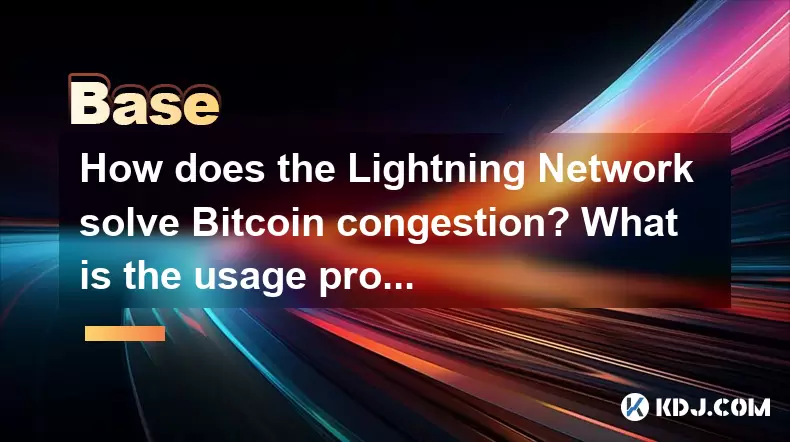
How does the Lightning Network solve Bitcoin congestion? What is the usage process?
Jun 23,2025 at 06:21pm
Understanding Bitcoin Network CongestionBitcoin, as a decentralized digital currency, operates on a blockchain that records every transaction in a public ledger. Each block has a limited size, typically 1 megabyte, which allows for only a certain number of transactions per second (TPS). When the number of transactions increases, the network becomes cong...

What is an oracle in blockchain? How to ensure data authenticity?
Jun 19,2025 at 08:49pm
Understanding the Role of an Oracle in BlockchainIn the context of blockchain technology, an oracle serves as a bridge between the blockchain and external data sources. While blockchains are inherently secure and decentralized, they cannot access real-world information on their own. Oracles enable smart contracts to interact with off-chain data such as ...

What are ICOs and IDOs in cryptocurrency? How to identify high-quality projects?
Jun 22,2025 at 11:49am
Understanding ICOs in CryptocurrencyInitial Coin Offerings (ICOs) are fundraising mechanisms used by cryptocurrency startups to raise capital for their projects. In an ICO, a company creates and sells its own tokens to investors in exchange for established cryptocurrencies like Bitcoin or Ethereum. The process typically involves the release of a whitepa...

What is the core concept of Web3.0? How is it different from Web2.0?
Jun 21,2025 at 05:56pm
Decentralization as the Foundation of Web3.0The core concept of Web3.0 revolves around decentralization, which fundamentally challenges the centralized architecture of Web2.0. In Web3.0, control and ownership are distributed across a network rather than being held by a central authority or corporation. This is achieved primarily through blockchain techn...

What is blockchain gaming (GameFi)? How to make money while playing?
Jun 20,2025 at 07:56am
Understanding Blockchain Gaming (GameFi)Blockchain gaming, often referred to as GameFi, is a fusion of blockchain technology and video games. It enables players to own in-game assets through non-fungible tokens (NFTs) and earn rewards via cryptocurrencies or token-based systems. Unlike traditional games where items are controlled by centralized develope...

What is staking in cryptocurrency? What are the benefits and risks?
Jun 22,2025 at 10:01am
Understanding the Concept of Staking in CryptocurrencyStaking in cryptocurrency refers to the process of actively participating in transaction validation on a blockchain network that uses a Proof-of-Stake (PoS) consensus mechanism. Instead of miners competing to solve complex mathematical puzzles as in Proof-of-Work systems like Bitcoin, PoS blockchains...

How does the Lightning Network solve Bitcoin congestion? What is the usage process?
Jun 23,2025 at 06:21pm
Understanding Bitcoin Network CongestionBitcoin, as a decentralized digital currency, operates on a blockchain that records every transaction in a public ledger. Each block has a limited size, typically 1 megabyte, which allows for only a certain number of transactions per second (TPS). When the number of transactions increases, the network becomes cong...
See all articles



















